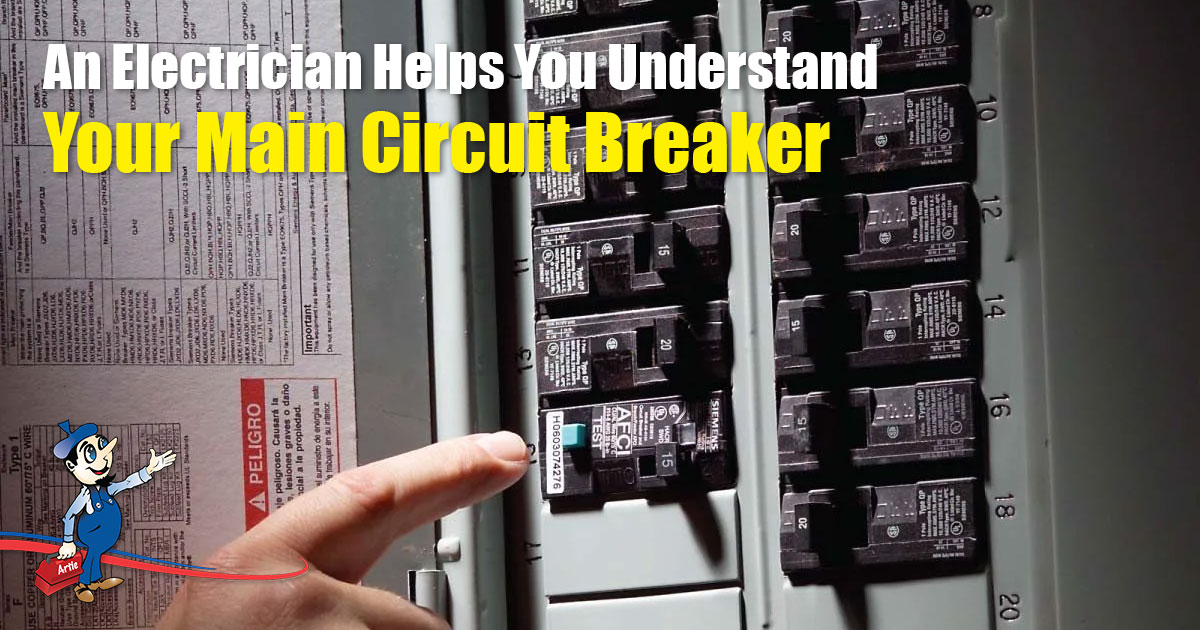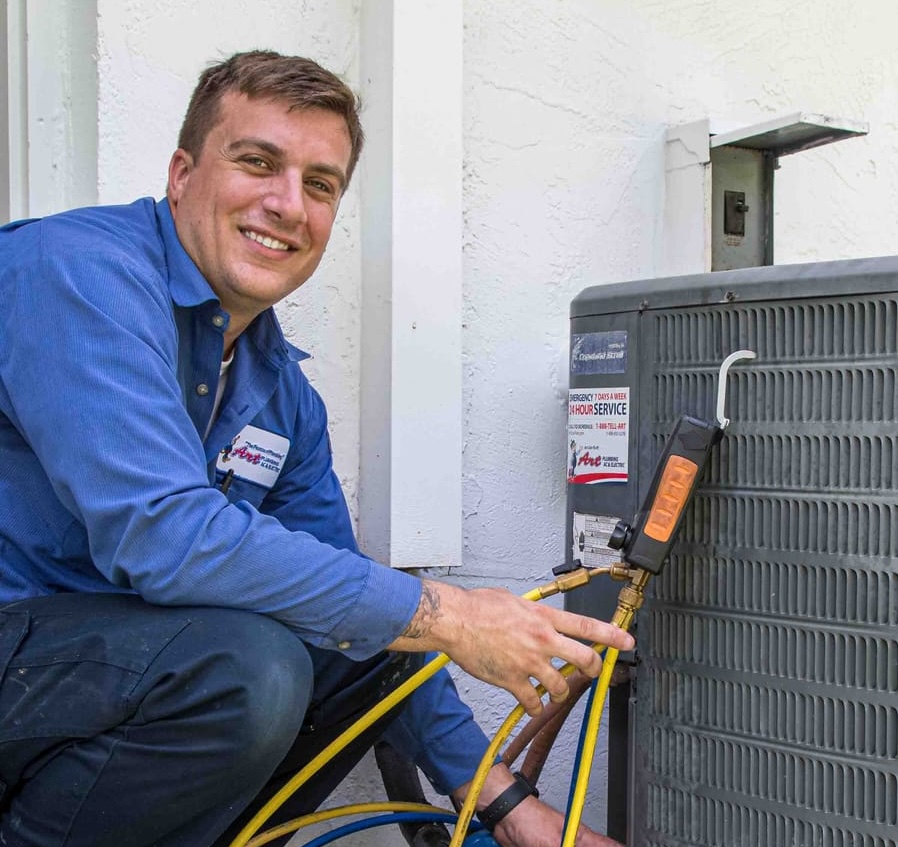An Electrician Helps You Understand Your Main Circuit Breaker

We all groan in frustration when we are in the middle of something important, and the lights go out, or when we plug in an appliance and the electricity trips. Do you head straight for the electrical panel, but like so many others, are baffled and confused when confronted with all the different switches? An electrician, familiar with the electrical panel and circuit breakers, will quickly be able to diagnose and repair the problem.
However, unless you have the knowledge and experience that an electrician has, it is advisable not to tamper with the circuit breakers and especially the main circuit breaker in an electrical panel.
What Is The Function Of The Main Circuit Breaker?
The circuit board is comprised of two types of circuit breakers:
- Branch circuit breakers
- The main circuit breaker
Branch Circuit Breakers
Branch circuit breakers control specific areas of the building and are usually light or plug outlet specific. If an abnormal flow of current is detected, such as a faulty appliance that draws too much power, the allocated branch circuit breaker will trip, but the other circuit breakers may be unaffected.
Main Circuit Breakers
The main circuit breaker controls the whole electrical panel. If a large fault or current overload is detected, it acts as a safety mechanism by interrupting the flow of current to all the circuit breakers. When the main circuit breaker trips, all the branch circuit breakers will not receive power and the whole building will be without electricity.
Main Circuit Breakers Come In Various Sizes
- Low voltage – Found in residential properties
- Medium voltage – Found in larger residential buildings like apartment blocks or office blocks
- High voltage – Used by utility companies
What Is A Circuit Breaker Made Up Of?
A circuit breaker in the electrical circuit panel is made up of five basic components.
These components are:
- The frame
- The operating mechanism
- The contacts
- The arc extinguisher
- The trip unit
The Frame
The insulated housing where the circuit breakers are mounted is called the frame. It protects the internal parts of the circuit breaker from any outside materials that could harm it.
The Operating Mechanism
The operating mechanism provides the means for the circuit breaker to open and close.
The Contacts
The contacts allow power to flow when the circuit is closed.
The Arc Extinguisher
The arc extinguisher extinguishes any arc formed due to the circuit breaker interrupting the current when an electrical fault is detected.
The Trip Unit
The trip unit will open up the mechanism in the event of an electrical overload or short circuit.
What Would Cause The Main Circuit Breaker To Trip?
Main circuit breakers do not trip easily, as the branch circuit breakers are the front line in the protection against abnormal current flow.
Things that would cause the main circuit breaker to trip include:
- A lightning strike that damages electrical wires.
- A utility power surge that damages a large electrical appliance, causing it to draw more power.
- An overloaded electrical panel.
- Faulty wiring, especially if a live wire comes into contact with a neutral or ground wire.
If your main circuit breaker continues to trip, or you struggle to reset it, it is an indication of a serious electrical fault and you need to contact an electrician to urgently assess your electrical wiring.
How To Shut Off & Reset The Main Circuit Breaker
When an electrician needs to work on an area of a building, they may switch off the branch circuit breaker in the area that they will be working in. If they want to ensure that the power is off in the whole building, they will switch off the main circuit breaker.
Wearing rubber-soled shoes and using rubber insulated tools that do not conduct electricity, the electrician will:
- Switch off the branch circuit breakers one at a time.
- Switch off the main circuit breaker once all the branch circuit breakers are off.
When they want to restore power, they will reverse the process:
- Switch on the main circuit breaker
- Switch on the branch circuit breakers one by one. They will take their time when doing so, as they want to prevent a power surge.
Art Plumbing, Air Conditioning & Electric: The Electricians Of Choice In South Florida
If you’re having a problem with the main circuit breaker, always hire a qualified electrician. Art Plumbing, Air Conditioning & Electric are the trusted electricians in South Florida. And they have been since 1983!
Contact us Monday to Saturday from 8 a.m. to 8 p.m. and on Sundays for emergencies at 1-800-475-1504.
For more helpful tips like this, check out our Plumbing, AC & Electric Tips blog, or follow us on Facebook!



